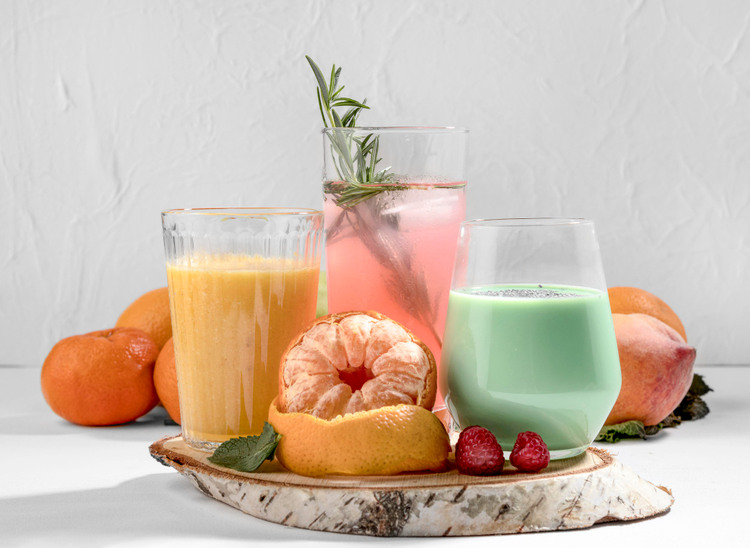Ever wondered, can you eat after a filling? Rest assured, eating after a dental filling is perfectly manageable with the right know-how. It’s not complicated; you can enjoy your meals soon after treatment by following simple timing and food guidelines to protect your filling.
In this guide, we explore when to resume eating, safe food choices, essential post-treatment care, and how to handle discomfort. Dive in to discover how to care for your dental filling and eat with confidence!
When Can You Eat After a Dental Filling?
The wait time and precautions for eating after a dental filling vary depending on a few key factors. We’ve outlined what influences your eating timeline to help you protect your filling and eat confidently:
1. Filling Materials. The type of material, like amalgam, composite, or glass ionomer, affects setting time. Here’s a concise guide:
| Filling Material | Wait Time Before Eating | Notes |
| Composite | 1-2 hours | Sets fast with curing light; wait for anesthesia to wear off. |
| Amalgam | 24 hours | Needs time to harden; stick to soft foods. |
| Glass Ionomer | 2-3 hours | Sets moderately; avoid chewing on filled side. |
2. Local Anesthesia. Numbness from anesthesia, lasting 1-3 hours, can make chewing risky as you might bite your cheek or tongue.
3. Procedure Complexity. Larger or deeper fillings may need extra care due to increased sensitivity or stabilization time.
4. Tooth Condition. Pre-existing sensitivity or gum issues like gingivitis can affect how soon you can eat comfortably.
Understanding these factors helps you protect your filling and avoid issues. Always follow your dentist’s specific advice, as wait times in restorative dentistry procedures may vary based on your unique treatment.

What Can You Eat After a Filling?
Choosing the right foods is crucial for eating after a dental filling to ensure a smooth recovery. Your tooth’s sensitivity and unique condition play a big role in what’s safe to eat. Below, we share the best food choices and what to avoid to keep your filling secure.
Best Foods for a Safe Recovery
Soft foods are ideal for eating after a dental filling as they minimize pressure on your new filling and reduce discomfort. Here’s a complete list of safe options:
- Yogurt: Creamy and gentle, perfect for sensitive teeth.
- Mashed potatoes: Soft and easy to chew, especially when lukewarm.
- Smoothies: Nutrient-packed and safe, avoiding extreme temperatures.
- Scrambled eggs: Soft, protein-rich, and easy on your teeth.
- Oatmeal: Warm (not hot) and smooth for a filling meal.
- Applesauce: Gentle on teeth and easy to swallow.
- Soups: Lukewarm broths or pureed soups like tomato or pumpkin.
- Bananas: Naturally soft and non-irritating.
- Cottage cheese: Soft and mild, ideal for early recovery.
- Cooked vegetables: Steamed carrots or zucchini, mashed for ease.

Foods to Avoid to Protect Your Filling
To protect your dental filling, steer clear of hard, sticky, crunchy, or extreme-temperature foods for at least 24 hours. Avoid chewing gum, candies, nuts, ice, or tough meats, as they can dislodge or damage the filling. Hot or cold foods and drinks, like steaming coffee or ice cream, may trigger sensitivity, while sugary or acidic items, such as soda or citrus fruits, can irritate the tooth and surrounding gums.
Learn more: What to Eat After Filling: Essential Tips for a Smooth Recovery
Maintaining Oral Hygiene After a Tooth Filling
Proper oral hygiene is essential for eating after a dental filling without complications. Keeping your mouth clean protects the filling, reduces sensitivity, and prevents issues like decay or gum irritation, ensuring you can enjoy meals comfortably. Below, we share key post-treatment care tips to maintain your dental hygiene and support a healthy recovery:
- Brush Gently: Use a soft-bristled toothbrush and non-abrasive toothpaste to clean around the filling without damaging it. Start brushing gently 24 hours after the procedure to avoid irritation. Learn more in our guide on best practices for daily oral care.
- Floss Carefully: Flossing keeps food particles from lodging near the filling, which can lead to decay. Use gentle motions and consider floss picks for easier access. Learning how to floss properly is crucial for maintaining oral health after a dental filling.
- Rinse with Saltwater: A warm saltwater rinse (1 tsp salt in a glass of warm water) 24 hours after your filling helps soothe gums and keep the area clean, supporting post-treatment care.
- Avoid Mouthwash with Alcohol: Alcohol-based mouthwashes can irritate the filled tooth. Opt for an alcohol-free rinse to maintain dental hygiene without discomfort.
Long-term tip: Visiting a dentist for professional cleanings removes plaque and ensures your filling stays secure. Also, check for signs like food trapping or sensitivity while eating. Regular checkups with your dental hygienist catch problems early.
Eat Confidently with Expert Dental Filling Care!
A dental filling doesn’t have to disrupt your meals. With the right care, you can enjoy food worry-free and keep your smile shining.
Book a consultation at Pape Dental Centre to ensure your filling stays strong.
Dealing with Discomfort for Eating After a Filling
Experiencing discomfort while eating after a dental filling is common, especially tooth sensitivity, which can make chewing uncomfortable. Over 60% of patients experience sensitivity to hot, cold, or sweet foods after a filling, but it typically resolves within a week [source: Bath PDS Health]. To manage it effectively:
First, avoid extreme temperatures like very hot or cold foods and drinks, such as ice cream or steaming coffee, for the first few days to reduce discomfort.
Second, use desensitizing toothpaste. Brush with a toothpaste designed for sensitive teeth to lessen irritation over time.
Besides these, chew on the opposite side. Avoid using the filled tooth for chewing until sensitivity subsides, typically within a week.
Also, you can take over-the-counter pain relievers. If sensitivity causes mild pain, ibuprofen or acetaminophen can help, but consult your dentist first.
Important: While most discomfort fades quickly, contact an emergency dentist if you notice persistent pain beyond a week, swelling, a loose filling, or difficulty chewing that doesn’t improve. These could signal issues needing prompt attention to protect your filling and oral health.

A Patient’s Story: Overcoming Eating Challenges After a Filling
Hearing a real patient’s experience can help you navigate eating after a dental filling with confidence. Below, Charlotte shares how she overcame challenges with her new filling at Pape Dental Centre, thanks to tailored advice and care:
“After my dental visit to Pape Dental Centre, my unique condition was thoroughly examined, and the best dental filling method was chosen for me. Eating after a dental filling wasn’t easy at first. I had a deep cavity filled, and my tooth was already sensitive from previous gum issues. The first few days, every bite of food felt uncomfortable, especially when I tried crunchy snacks or sugary desserts, even though I’d been told not to eat these too soon. I was worried I’d damage my new filling or cause more pain.
After returning for a follow-up exam and consultation with my dentist at Pape Dental Centre, I learned how to adjust my diet and care routine. Sticking to soft foods like smoothies and mashed potatoes helped immensely, and I avoided hard or sticky foods that could irritate my sensitive tooth. They also recommended a saltwater rinse to soothe my gums, which made eating much more comfortable. Within a week, I was back to enjoying meals without worry, thanks to these simple post-treatment care tips.”
– Charlotte, 30, Toronto
As Charlotte’s story shows, eating after a dental filling isn’t complicated; you just need to follow key post-treatment care tips and stay in touch with your dentist, especially if you have a history of dental issues and your condition is more complex than usual.
Enjoy Eating Safely After Your Filling
Eating after a dental filling is straightforward when you know the right steps. By waiting the appropriate time based on your filling type, choosing soft foods, maintaining proper oral hygiene, and managing any sensitivity, you can protect your filling and eat comfortably. These post-treatment care tips ensure your dental filling stays secure and your recovery is smooth.
At Pape Dental Centre, our restorative dentistry services, including expert dental fillings, are designed to restore your smile with care. Whether you need a filling or advice on post-treatment care, our team is here to help. Book a consultation or appointment today to ensure your dental health is in good hands.
FAQ
Can I Drink Right After a Filling?
Yes, you can drink water right after a dental filling, but wait until the local anesthesia wears off (1-2 hours) to avoid biting your tongue or cheek. Avoid hot, cold, or sugary drinks for 24 hours to protect the filling.
What Foods Should I Eat After a Dental Filling?
Stick to soft foods like yogurt, mashed potatoes, or smoothies for 24 hours after a filling. Avoid hard, sticky, or hot/cold foods to ensure a safe recovery.
Why Does My Tooth Feel Sensitive When Eating?
Tooth sensitivity after a filling is common due to the procedure itself. Avoid hot or cold foods and use desensitizing toothpaste. If sensitivity persists, contact your dentist.
How Long Will My Dental Filling Last?
Dental fillings can last 7-15 years with proper care. Maintain good oral hygiene and regular checkups to extend their lifespan. Ask your dentist about restorative dentistry options for long-term care.
We’d love to hear your experiences, questions, or concerns about eating after a dental filling. Share them in the comments below; your insights could help others navigate their recovery.


